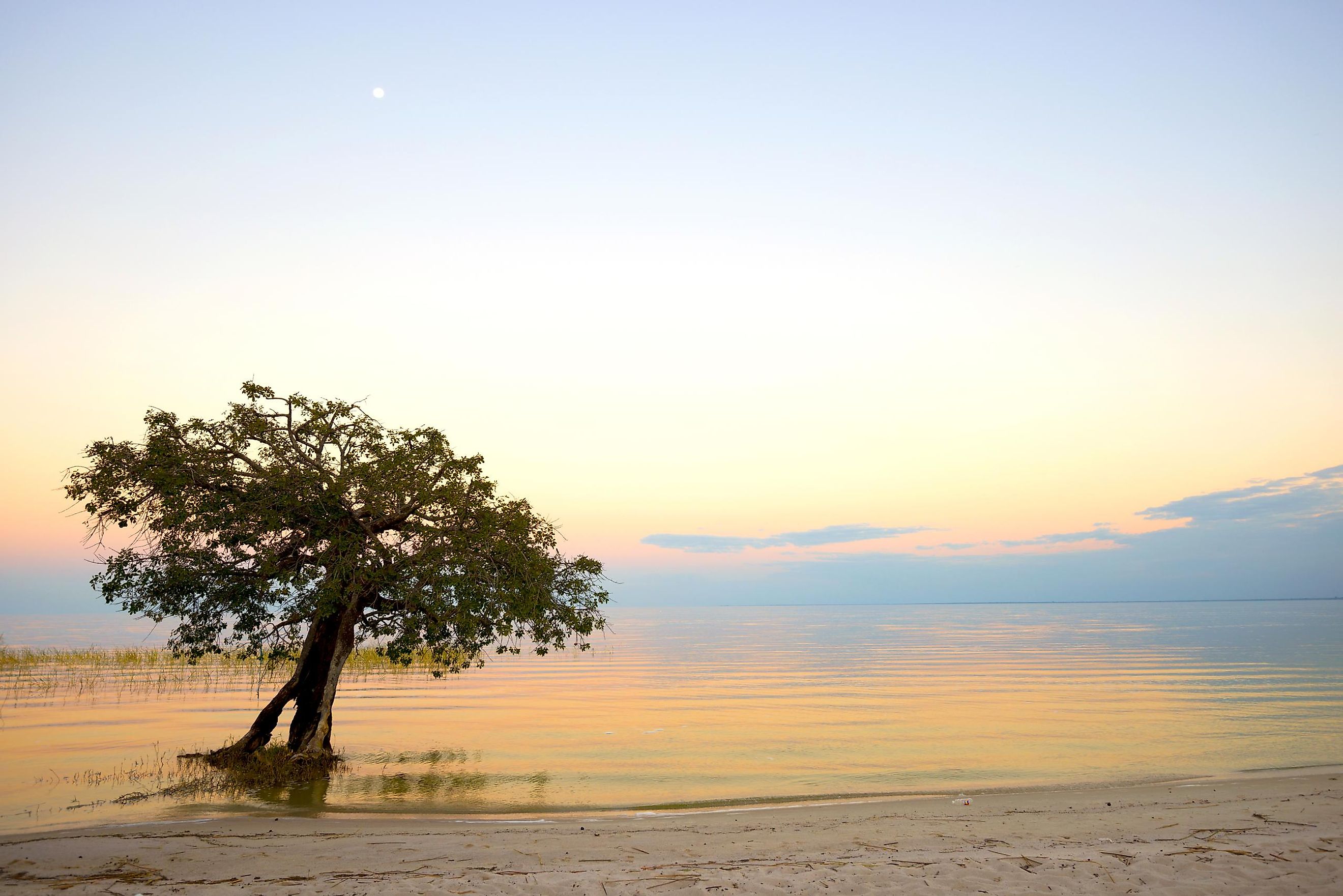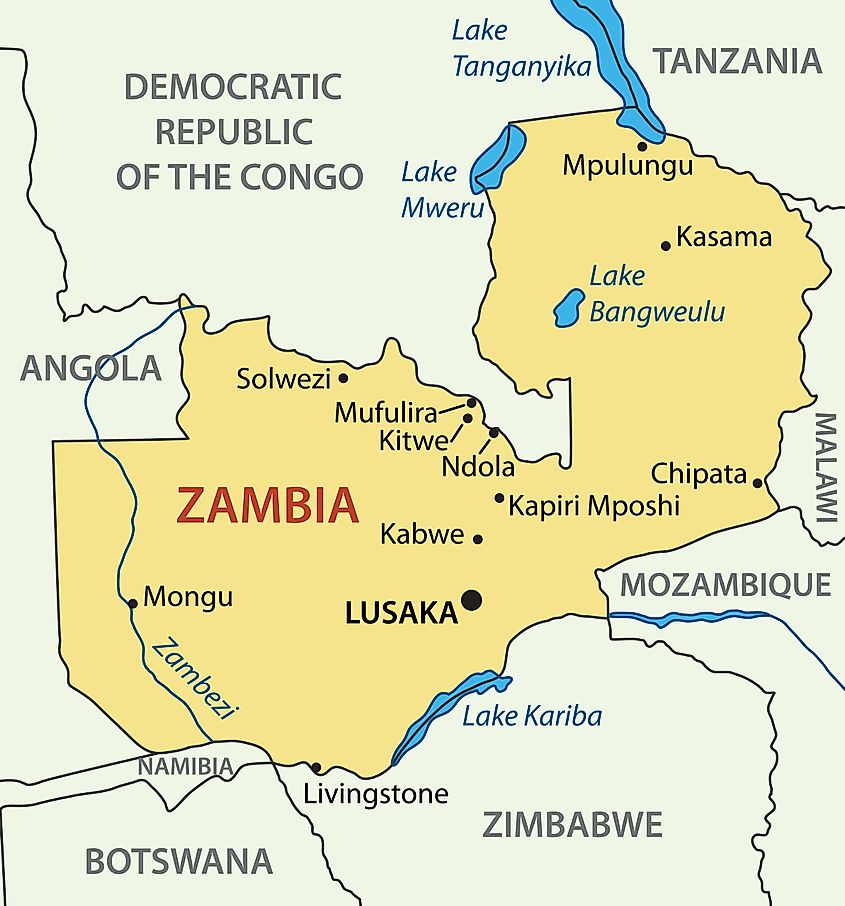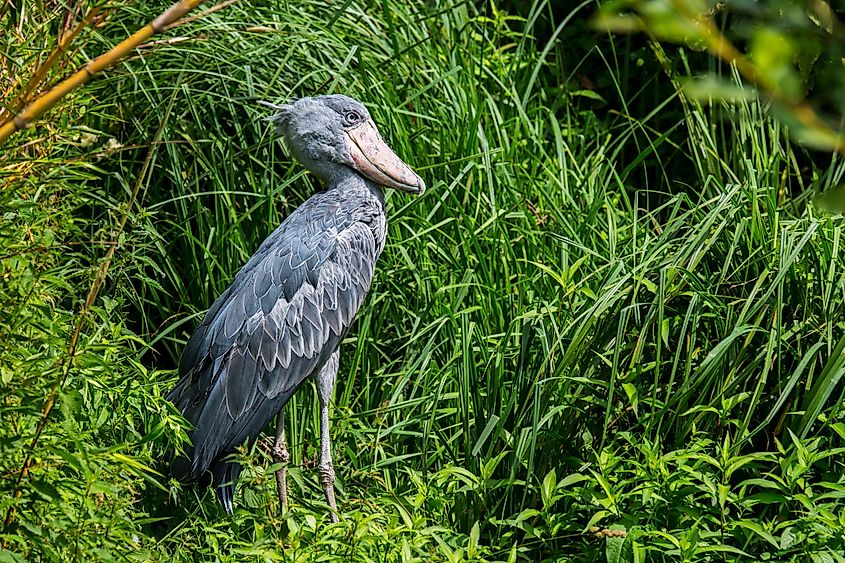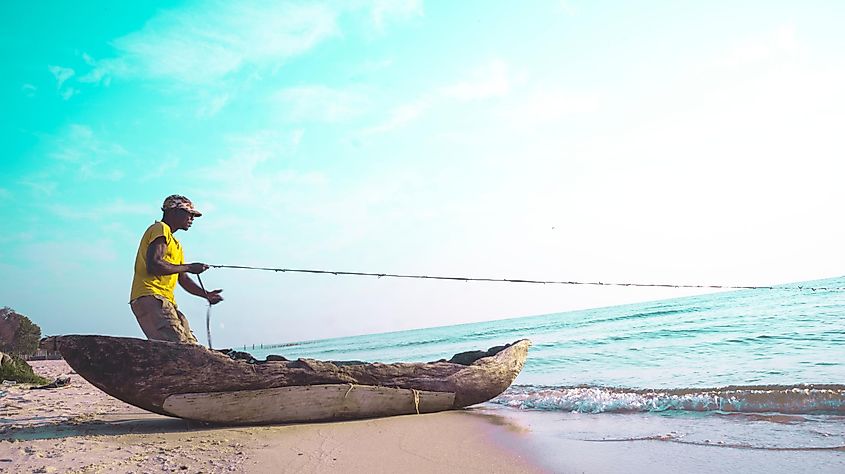
Lake Bangweulu
Lake Bangweulu is a 5,800-square-mile shallow inland reservoir surrounded by sandy beaches and muddy swamps in northeastern Zambia's upper Congo River Basin. It is one of the world's greatest wetland systems due to its comprising elements, such as the Bangweulu Swamps and the Bangweulu Flats. The lake itself is geographically significant because of its exploitation as a source of fish for Africans residing close by in the town of Samfya. It is also seen as a rugged ridge zone in the region that is visited frequently due to its six major lake entryways to the Congo River and water drainage that leads directly into the Luapula River.

History Of Lake Bangweulu
The Bangweulu Wetland region was originally thought to have formed due to pre-historic meteorite impact craters, with circular depressions and radial formations resulting in the development of the lake. Later, Scottish explorer-missionary Dr. David Livingstone visited Lake Bangweulu in 1868 but eventually died on its southern shoreline in 1873, making him one of the principal observers to witness the lake's formation as a tribal-driven island zone. Rural formations of the land were slowly established thereafter in the coming decades.
In the mid-1900s, the lake transformed into a communal fishing lake for residents and locals who wanted to capitalize on fresh fish supplies, but this effort expanded into more suburban needs with a post office, clinic, and fuel management for aviation crews. As more residential communities poured into Samfya over the years, the lake simultaneously became a hotspot for angling crews and marine ecosystem visitations. Over some time, the lake had come to be known as "the place where the water meets the sky," a reference to its gorgeous horizons and fittingly serene atmosphere full of wildlife and natural resources.
Climate And Vegetation Levels
Lake Bangweulu tends to flood often, with wet seasons occurring naturally between November and March of each year. It receives annual rainfall averages, but 90% of the climate is quickly lost to evapotranspiration, meaning that there is water loss due to plant evaporation and irregular leaf growth circumstances. Vegetation around the swamps is expected, with papyrus zones and hippograss found in deeper trenches of the lake, as well as lush mangrove forests. However, excessive vegetation is quite common throughout the year, making the lake more likely to provide overgrowth along the course of the Chambeshi River. As a result, overlapping floodplains are a usual norm in this tropical and subtropical environment.
Animal Habitats In Lake Bangweulu

Shoebill storks are generally the most common and magnificent sight around Lake Bengweulu. The lake also has plenty of agile cheetahs and endemic black lechwe, alongside grazing tsessebe, semi-aquatic sitatunga, oribi, reedbuck, and various other types of wildebeest and antelope. Most of these grassland creatures all live in or reside near papyrus-dominated swamps, making Lake Bangweulu an ideal natural landmark for avians and herbivores alike. Unfortunately, illicit activities like poaching have remained a threat in the region, generating a higher risk for exotic cheetahs and many species of antelope in general. Reportedly, herds of Cape buffalo migrate in groups of 500 at rare moments, making the lake a spectacular stop for tourists who want the best moments in Zambia captured on camera or film.
Islands Of Lake Bangweulu
There are three key inhabited island systems surrounding the lake: Chilubi Island, Mbabala Island, and Chishi Island. These islands all play a pivotal role in geographically splitting the lake into sections for fishing and dry farming needs, thus fulfilling respective socioeconomic divides of having to live off provincial lands for individual needs. In addition, the islands are an essential component for social groups and geographic settlement of tribes from surrounding countries, such as Congo, Tanzania, Mozambique, Malawi, Angola, Zimbabwe, and Botswana.
On most of these islands, especially Chilubi Island, light-toned sand formations are easily noticeable, with rich aquatic wetlands and coastline dune erosion. The shoreline is also well known for being a densely populated fishing village for rural Zambian residents. Lake Bangweulu has lots of deep and sophisticated water formations along all of these areas, establishing a well-rounded island system that provides plenty of fish and economic gain.
Human Settlement And Modern Tourism Developments

Various tribes inhabit towns adjacent to the lake, such as the Bisa in Chilubi and Mpika, Bemba in Luwingu, Unga in Lunga District, Kabende in Samfya, Ngumbo in Lubwe, BenaMukulu in Chungu, and dozens of other native communities who are affiliated with the region and speak Chibemba as a distinct dialect. These tribes are all reliant on the lake for many aspects of fishing and hunting, more so the latter when it comes to island livelihood and survivalism. As of late, most African communities in the south are heavily dependent on its surface areas for easy accessibility regarding cattle herding and ecoregional sustainability.
Today, Lake Bangweulu is seen as an important fishing and transportation route for Zambians and also plays a major domestic tourism role because of its swampland varieties and official birding paths, making it a Ramsar Wetland of International Importance. The lake is continually observed as a sustainable means for harvesting and revenue. Despite its inadequate amount of visitors from outside of the region, it is still an environmentally protected (within acceptable means) body of water that serves many purposes for both human and natural habitats.











